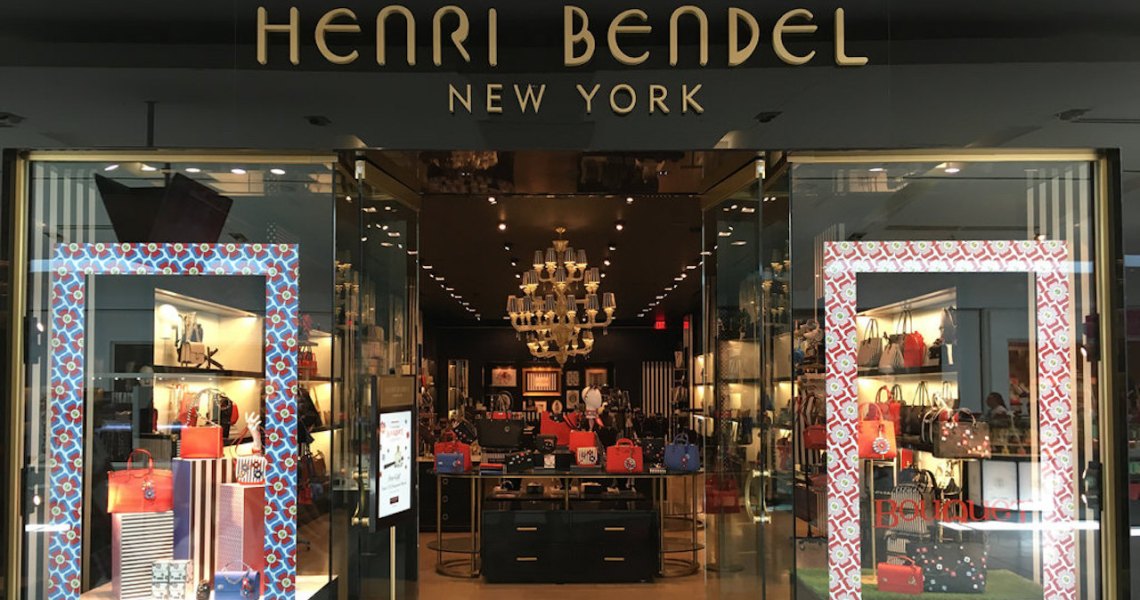When Fernando Jorge launched his first jewelry collection in 2010, he didn’t have much of a business plan in place. He didn’t know how he planned to sell nor did he give much thought to marketing or storytelling. What he did have was a partnership with Barneys New York.
The department store launched his collection in 2013 and was instrumental in helping the brand grow from a single collection to an award-winning, international jewelry brand. Department stores like Barneys were a crucial part of the development for a brand like his and for much of his early career, the brand did the vast majority of its sales through big brick-and-mortar retailers like Barneys, Bergdorf Goodman and Neiman Marcus, all of which have filed for bankruptcy in the last year. But now, that’s changed.
“It was super important for me to rely on the department stores and their networks to build the brand,” Jorge said. “But in the last few months, we’ve moved to 70% wholesale and 30% direct, with direct becoming more important every day. Most of wholesale is now online partners like Net-a-Porter and Moda Operandi.”
Coronavirus-related issues at big department stores, including store closures, canceled orders and bankruptcies, along with issues that preceded coronavirus, have made brands like Fernando Jorge question the ongoing importance of department stores to luxury fashion. Luxury has typically shied away from direct sales and e-commerce while boutiques and department stores have been the go-to channels. But with the fall of major department stores both before and during the global pandemic, those relationships are changing and department stores no longer fulfill the same necessary role for luxury brands that they once did.
“I really feel that many department stores lost their way,” said Jens Grede, co-founder of denim brand Frame. “They became overly promotional — too much merchandise, not enough experience, hard to navigate. Our attention spans got so short in this era of social media that plowing through racks and racks in big expansive department store floors felt antiquated.”
Instead, more luxury brands are turning elsewhere. Online retailers like Farfetch and Net-a-Porter have grown as department stores wither — Farfetch’s gross profits increased by $70 million in the first quarter of the year. Meanwhile, some luxury brands are turning to off-price platforms like Alibaba’s Luxury Soho and others are investing more heavily in their own direct channels.
“We have had e-commerce under construction for a little while now,” Jorge said. Currently, the brand’s direct sales are done mainly with high-value clients reaching out directly and conducted on a personal level. “E-commerce has jumped to the top of our priorities since we aren’t doing trade shows or trunk shows. The coronavirus was a catalyst for us, and I think will make DTC and e-commerce mandatory for every brand in the future. They can’t go through this crisis without looking at it.”
Ad position: web_incontent_pos1
Ulrik Garde Due, CEO of Mark Cross, said that, for years, nearly all of the brand’s business was wholesale, selling through Bergdorf Goodman and Saks Fifth Avenue, among others. Since he started at the company over a year ago, he said a major focus has been on taking the brand toward a more direct-to-consumer business. His goal for the next two years is to get the brand to 50-50 wholesale and direct. Since he started, the brand has opened its first store, a flagship on Madison Avenue, and upgraded the brand’s e-commerce store, in 2019.
According to Garde Due, department stores have also failed to tell compelling stories around the brands they sell without giving enough creative control to those brands on how their products are positioned, framed and sold. It’s specifically American department stores that suffer this problem.
“Le Bon Marche in Paris is doing a terrific job, in terms having strong product experiences specific to the brand, as is Selfridges and Harrods,” Garde Due said. “American department stores have some catching up to do. Department stores abroad do a good job of letting the brands be in control of their destiny and have input on how they’re sold. I think that’s one way forward for American stores if they can catch up.”
For Mark Cross’ 175th anniversary this year, Garde Due said the brand is developing all of the storytelling components and marketing materials internally and not relying on retail partners to carry the weight the way it would have in the past. Jorge echoed the sentiment.
“We’re definitely becoming less reliant on retailers to generate content and material for us,” Jorge said. “We need to tell our own stories now. I think that’s true for every luxury brand.”
Ad position: web_incontent_pos2
The prevailing feeling among both consumers and brands is that the role that department stores used to fill — discovery, cultivation of new brands, tastemaking — just isn’t there anymore.
“Twenty years ago, department stores were the first place consumers across the country would turn to for their apparel and beauty needs,” said Bob Hoyler, senior research analyst at Euromonitor International. “Even though sales of clothing, footwear and cosmetics remain the lifeblood of the channel, department stores are increasingly an afterthought to customers looking to purchase these types of products today.”
All this doesn’t necessarily mean that luxury brands will flee department stores — Jorge said he would maintain partnerships with his department stores, as there is still an element of prestige and legitimacy in having products sold in Saks Fifth Avenue, he said — but the nature of those relationships will be different going forward.
“Department stores used to be a solution for us, but now, especially with all the bankruptcies, they’ve become almost more of a risk,” Garde Due said. “I refuse to say they’re done, we will still sell through them and I’m not jumping out of department stories entirely, but I will be careful with them. I’m not treating them like a perfect solution for me. Not anymore.”




